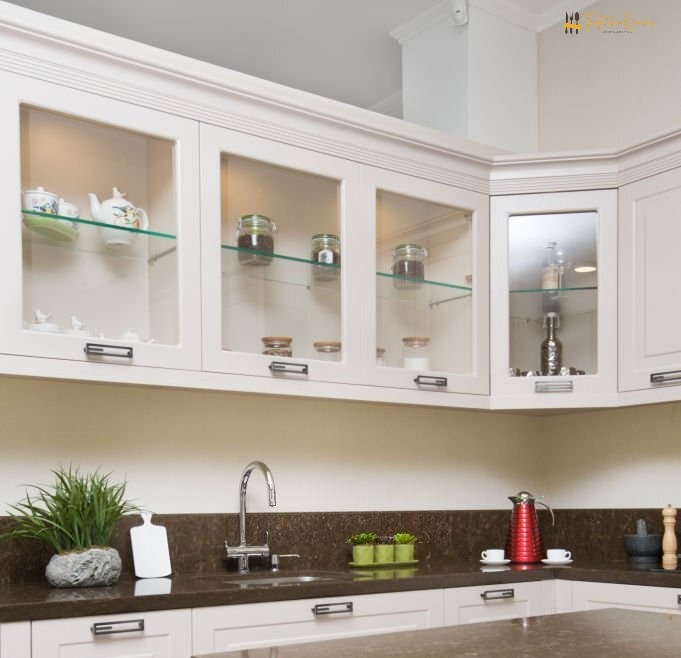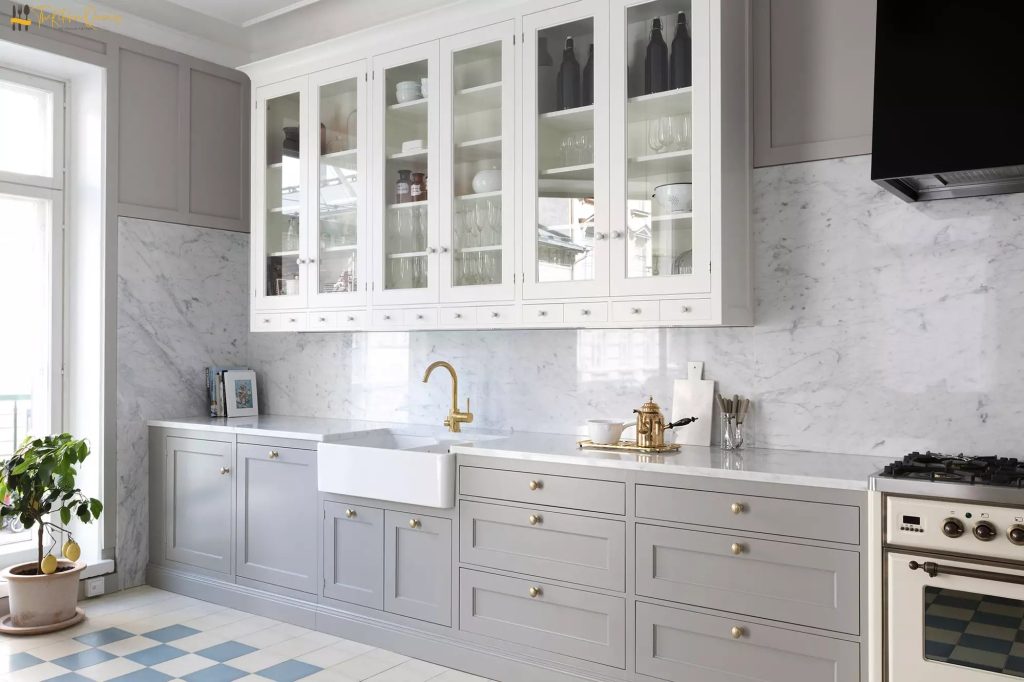Display cabinets are crucial for showcasing valuable items while keeping them safe and visible.
While glass is a common material used for display cabinets, it comes with its challenges.
This article explores alternative materials to glass for display cabinets and their benefits.
I. Importance of Display Cabinets:

Display cabinets play a pivotal role in showcasing valuable items, collectibles, or merchandise while ensuring they remain visible and protected.
Whether used in homes, museums, retail stores, or exhibitions, display cabinets serve both functional and aesthetic purposes.
They provide a secure environment for items, safeguarding them from dust, damage, and theft, while also allowing them to be prominently displayed for admiration and appreciation.
Display cabinets are essential for preserving the value and integrity of showcased items, making them a valuable asset in various settings.
II. Challenges with Glass Display Cabinets:
Glass display cabinets, while commonly used, come with several challenges that may affect their suitability for certain applications:
- Fragility: Glass is inherently fragile and prone to breakage, posing a risk of injury and potential damage to displayed items. This fragility necessitates careful handling and maintenance to prevent accidents or costly repairs.
- Weight: Glass display cabinets can be heavy, especially when made with thick glass panels. This weight not only adds complexity to installation but also limits mobility and flexibility in relocating or repositioning the cabinets.
- Maintenance: Glass surfaces are prone to smudges, fingerprints, and dust, requiring regular cleaning and maintenance to ensure optimal visibility and presentation of displayed items. This upkeep can be time-consuming and labor-intensive, particularly in high-traffic environments.
Considering these challenges, exploring alternative materials for display cabinets may offer solutions that address these concerns while maintaining functionality and aesthetics.
III. Alternatives to Glass for Display Cabinets:

While glass is a popular choice for display cabinets, several alternative materials offer comparable functionality and aesthetic appeal.
Here are some alternatives to consider:
- Acrylic: Acrylic, also known as plexiglass, is a lightweight and durable plastic material that resembles glass. It offers excellent clarity and transparency, making it an ideal substitute for glass in display cabinets. Acrylic is shatter-resistant and easy to maintain, making it suitable for high-traffic environments.
- Plexiglass: Similar to acrylic, plexiglass is a type of transparent plastic that is lightweight and impact-resistant. It provides excellent visibility and protection for displayed items while offering superior durability compared to glass. Plexiglass is available in various thicknesses and can be easily cut to size for custom display cabinets.
- Polycarbonate: Polycarbonate is a tough and resilient thermoplastic material that offers exceptional impact resistance. It is virtually unbreakable, making it an excellent choice for display cabinets in environments where safety is a concern. Polycarbonate also provides excellent optical clarity, ensuring optimal visibility of displayed items.
- Tempered Hardboard: Tempered hardboard, also known as tempered masonite, is a sturdy and economical alternative to glass for display cabinets. It is made from compressed wood fibers and treated with heat and pressure to enhance its strength and durability. Tempered hardboard is lightweight, easy to work with, and can be painted or laminated to match any decor.
- Mesh Wire: Mesh wire is a unique alternative to traditional solid materials for display cabinets. It consists of metal wire mesh panels that provide partial visibility while still offering protection for displayed items. Mesh wire cabinets have a modern and industrial aesthetic and are ideal for showcasing items that do not require full visibility.
Each of these alternative materials offers its advantages and considerations, allowing you to choose the best option based on your specific needs, budget, and aesthetic preferences.
Whether you prioritize durability, safety, or affordability, exploring these alternatives can help you find the perfect solution for your display cabinet needs.
IV. Benefits of Alternative Materials:

Exploring alternative materials for display cabinets offers several advantages over traditional glass options:
- Durability: Alternative materials such as acrylic, plexiglass, and polycarbonate are more durable and impact-resistant than glass. They are less prone to breakage, making them ideal for high-traffic environments or areas where safety is a concern.
- Lightweight: Many alternative materials are lighter in weight than glass, making them easier to handle, transport, and install. This lightweight nature provides greater flexibility in cabinet design and placement, allowing for more creative and versatile display options.
- Customization: Alternative materials can be easily cut, shaped, and customized to fit specific design requirements. Whether you need curved panels, irregular shapes, or custom sizes, materials like acrylic and plexiglass offer flexibility and versatility in cabinet design.
- Clarity and Visibility: Despite not being glass, alternative materials such as acrylic and polycarbonate offer excellent optical clarity and transparency. They provide clear visibility of displayed items while offering protection and security.
- Cost-Effectiveness: In many cases, alternative materials are more cost-effective than glass, offering comparable performance at a lower price point. This cost savings can be particularly beneficial for large-scale display projects or budget-conscious applications.
- Maintenance: Alternative materials often require less maintenance than glass, as they are less prone to smudging, scratching, or staining. This reduces the time and effort needed for cleaning and upkeep, allowing for more efficient and hassle-free maintenance routines.
Overall, the benefits of alternative materials for display cabinets include enhanced durability, lightweight design, customization options, optical clarity, cost-effectiveness, and reduced maintenance requirements.
By considering these advantages, you can make an informed decision when selecting the best material for your display cabinet needs.
V. Considerations When Choosing an Alternative:

When selecting an alternative material for display cabinets, it’s essential to consider the following factors to ensure the best fit for your specific needs:
- Durability: Evaluate the durability and impact resistance of the alternative material compared to glass. Consider the environment in which the display cabinets will be placed and choose a material that can withstand potential wear and tear.
- Aesthetic Appeal: Assess the visual appearance of the alternative material and its compatibility with your desired aesthetic. Consider factors such as clarity, transparency, and surface finish to ensure that the material enhances the presentation of displayed items.
- Customization Options: Determine the level of customization available with the alternative material. Consider whether it can be easily cut, shaped, or modified to fit your design requirements, including curved or irregular shapes.
- Installation Requirements: Consider the installation process and any special requirements associated with the alternative material. Ensure that the material is easy to handle, transport, and install and that it can be securely mounted within the display cabinets.
- Cost: Compare the cost of the alternative material to glass and assess its cost-effectiveness. Consider factors such as material pricing, installation costs, and long-term maintenance expenses to determine the overall affordability of the material.
- Maintenance: Evaluate the maintenance requirements of the alternative material and consider its ease of cleaning and upkeep. Choose a material that is resistant to smudging, scratching, and staining, and that requires minimal maintenance to preserve its appearance over time.
By carefully considering these factors, you can select the most suitable alternative material for your display cabinets, ensuring optimal performance, durability, and aesthetic appeal.
VI. Cost Comparison:

When choosing an alternative material for display cabinets, it’s essential to consider the cost implications compared to traditional glass options.
Here are some key factors to consider in the cost comparison:
- Material Pricing: Compare the cost of the alternative material, such as acrylic, plexiglass, or polycarbonate, to the price of glass. Keep in mind that alternative materials may vary in price based on factors such as thickness, quality, and manufacturer.
- Installation Costs: Assess any additional installation costs associated with the alternative material. Consider factors such as cutting, shaping, and mounting requirements, as well as any specialized tools or equipment needed for installation.
- Long-Term Maintenance Expenses: Evaluate the long-term maintenance expenses of the alternative material compared to glass. Consider factors such as cleaning products, maintenance routines, and repair or replacement costs over time.
- Durability and Lifespan: Consider the durability and lifespan of the alternative material and its impact on overall cost-effectiveness. While alternative materials may have a higher upfront cost than glass, they may offer greater durability and longevity, resulting in lower long-term expenses.
- Customization and Design Flexibility: Assess the customization options and design flexibility of the alternative material and its impact on cost. Consider whether the material can be easily customized to fit specific design requirements without incurring additional expenses.
By conducting a thorough cost comparison, taking into account factors such as material pricing, installation costs, maintenance expenses, durability, and design flexibility, you can make an informed decision that balances affordability with performance and quality for your display cabinets.
Video Guide:
Wrapping Up:
Choosing the right material for display cabinets is essential for achieving both aesthetic appeal and practical functionality.
While glass has long been a popular choice, alternative materials such as acrylic, plexiglass, and polycarbonate offer comparable benefits with added advantages such as durability, customization options, and cost-effectiveness.
By carefully considering factors such as durability, aesthetics, customization options, installation requirements, and cost, you can select the most suitable material for your display cabinet needs.
Whether you prioritize durability, affordability, or design flexibility, exploring alternative materials allows you to find the perfect solution that meets your specific requirements and enhances the presentation of your displayed items.

I am a happy person. An adventurer. Currently wokring on different projects regarding SEO

